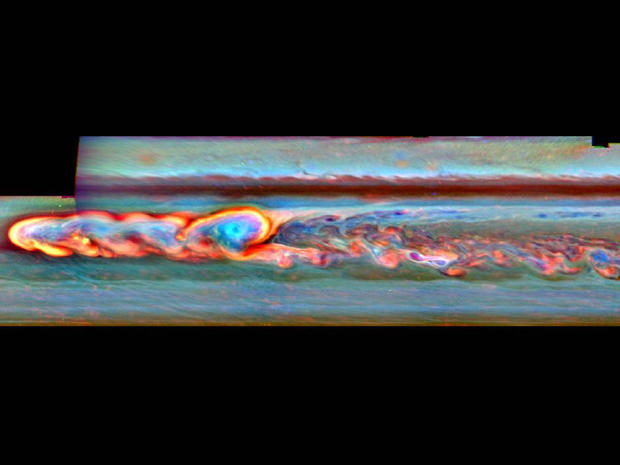Saturn storm chokes on its tail in stunning photos
NASA's Cassini spacecraft captured these images of a monstrous storm taking place on Saturn. The photos chart the complete life of the storm, a planet-straddling hurricane that grew so big it eventually ran into itself, choking on its own tail.
It is the first time scientists have observed a storm consume itself in this way anywhere in the solar system.
"This Saturn storm behaved like a terrestrial hurricane -- but with a twist unique to Saturn," Andrew Ingersoll, co-author of the paper analyzing the storm, told NASA. "Even the giant storms at Jupiter don't consume themselves like this, which goes to show that nature can play many awe-inspiring variations on a theme and surprise us again and again."
The massive tempest was first spotted by Cassini on Dec. 5, 2010. Within a matter of months, the storm had wrapped around the giant ringed planet, stretching about 190,000 miles around and spitting thunder and lightning along the way.
It is impossible for storms to behave this way on Earth. Even the largest hurricanes eventually run into topographic features like mountains that will stop the storm. But on a gas planet like Saturn, there are no physical barriers to a storm's growth.
The only thing that could stop this particular storm was itself. The storm circled the planet and showed no signs of stopping until it ran into its own vortex. By running into its own "tail," the storm lost focused and dissipated. All told, the storm raged for 287 days on Saturn.
"This thunder-and-lightning storm on Saturn was a beast," said Kunio Sayanagi, lead author of the paper. "The storm maintained its intensity for an unusually long time. The storm head itself thrashed for 201 days, and its updraft erupted with an intensity that would have sucked out the entire volume of Earth's atmosphere in 150 days."
